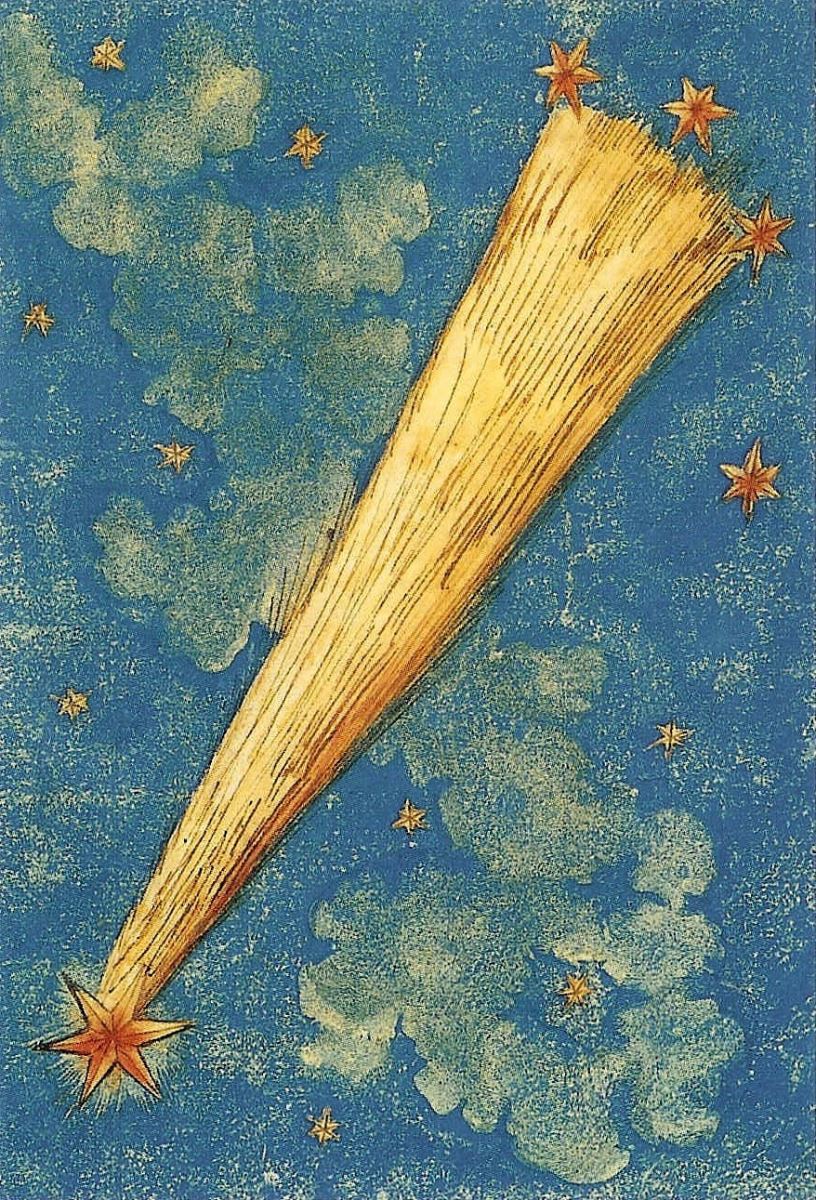Uranus and Halley: Two Coincidental Discoveries
Share




The First Coincidence
William Herschel was one of ten siblings, four of whom died young. His father was a musician and conductor of a musical army troupe; his mother was an illiterate housewife. Since childhood, he showed signs of genius and excellence, especially in mathematics and linguistics. At the age of five, his father joined him into the musical troupe; he was released from the troupe when war broke out between France and Britain in 1753. The photograph of Herschel as a member of the musical troupe, as well as the certificate of discharge, are on display at the Herschel Museum of Astronomy in Bath, England.
He lived with his sister, who suffered financially, prompting him to play the keyboard to help him. He was a well-known musician until 1767, after which he devoted all his free time to astronomy and mathematics. It all started when, at the age of 35, he read an astronomy book, which he enjoyed a lot; he became so interested that he decided to start building his own telescope. After 200 failed trials, he succeeded to use his first telescope (5.5-inch diameter) to observe the Orion Constellation, where he detected a strange nebula, which was a turning point.
Herschel had a friend and neighbor named William Watson, who observed the strange object with him; he wrote a report about what they saw as a newly discovered comet, and submitted it to the Royal Society. Coincidence played a role in this discovery, as King George III was interested in science and equipment. The King read Watson's report about Herschel and his discovery; he invited the latter to the palace, provided him with the required funds to build a big telescope, and assigned him an annual salary. Herschel became devoted to astronomy and astronomical observation, paying special attention to the object he observed earlier. With continued observations using a bigger telescope, the object turned out to be a new planet, not a comet, The International Astronomical Union named it Uranus.
The Second Coincidence
 Source: tumblr.com
Source: tumblr.com
Edmund Halley was born in 1656; his father was a soap maker and a real estate agent in London. Halley received his early education at home, before joining Saint Paul; he showed interest in mathematics and astronomy. At the age of seventeen, he joined Oxford University; his mother bought him astronomical equipment, and the renowned Astronomer Royal John Flamsteed was his supervisor. In 1673, Halley managed significant observations, including terrains of Mars and the Moon, and sunspots.
In 1676, he dropped his studies and started boxing; then he left London for Saint Helena Island, south of the Atlantic, where he regained interest in astronomical observation as a hobby. He catalogued 341 stars of the Earth's southern Hemisphere, and discovered a new star constellation. Halley also made the first observation of the transit of Mercury across the Sun. He wrote a research paper on how to use the transit of Venus across the Sun—like that of Mercury—to make astronomical calculations to measure the size of the Solar System.
In 1678, Halley became a famous astronomer. King Charles II issued a royal decree to return him to Oxford University and elect him member of the Royal Society. At the time, he was not twenty-two yet. After that, his observational achievements continued, all immediately published. His most important astronomical achievement was predicting the return of a comet, which he died before seeing.
The subject of the discovery and return of the comet started when Issac Newton published the Principles of Natural Philosophy, in which he said he suspected that the two comets that appeared in 1680 and 1681 are in fact one comet; yet, he could not prove it. However, when Edmund Halley published his book A Synopsis of the Astronomy of Comets, he used the laws of Newton to calculate the effect of Jupiter’s and Saturn’s gravity on the orbits of comets. He examined and traced the orbital elements of the two comets Newton mentioned; using theoretical calculation, he predicted the return of the comet the orbit of which around the Sun takes 76 years.
Halley passed away in 1742, at the age of 86, leaving three children: Margret, Rachel, and Edmund. He did not see the comet he discovered and predicted to return. The first to observe this comet was a German farmer interested in astronomy and astronomical observations, on 25 December 1758. Halley, the comet, appeared one month later than the actual prediction; scientists said this was due to Jupiter's gravity, just as Halley mentioned in his book. It is worth mentioning that the comet was named after Edmund Halley by French astronomer Nicolas-Louis de Lacaille, in 1759.
The article was first published in print in SCIplanet, Winter 2020 Issue.
Cover image: source.